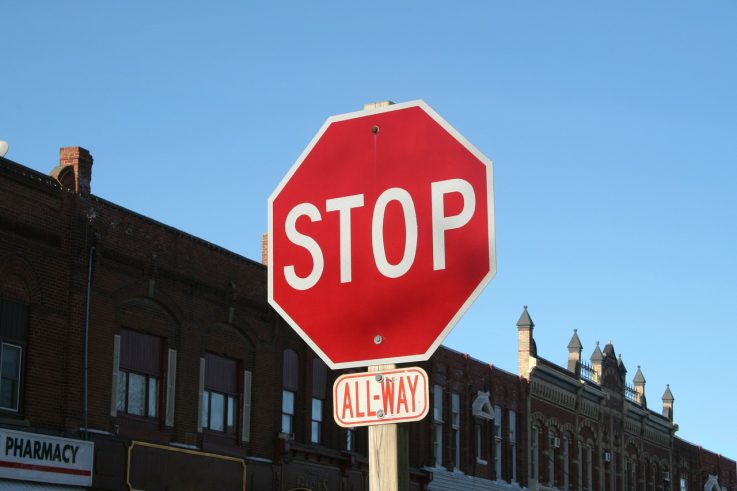Stop signs. Those bright red octagons are a ubiquitous sight on our roads, seemingly simple instructions. Yet, according to the Federal Highway Administration, red light running and failing to stop at stop signs are leading factors in intersection crashes. This begs the question: why is a complete stop at a stop sign so crucial in our fast-paced world?
The Science of Stopping:
Coming to a complete stop at a stop sign isn’t just about following the rules. It’s about physics and human reaction times. Stopping allows drivers to:
- Assess the intersection: A complete stop grants a clear view of oncoming traffic, pedestrians, and potential hazards. This crucial information-gathering time helps prevent accidents caused by obstructed views or sudden entries into the intersection.
- Yield the right of way: Stop signs prioritize traffic flow, dictating who goes first. Stopping ensures drivers respect this hierarchy and avoid dangerous situations like T-bone collisions.
- React to unexpected situations: A stopped car provides much-needed reaction time if a pedestrian steps into the street, a child darts out from behind a parked car, or another vehicle disregards the stop sign. Even a few seconds can be the difference between a safe stop and a devastating collision.
Beyond Safety:
The benefits of stopping at stop signs extend beyond preventing accidents. They contribute significantly to:
- Traffic Flow: When drivers predictably stop and yield at intersections, traffic flows more smoothly, reducing congestion and frustration for everyone on the road.
- Pedestrian Safety: Complete stops ensure the safety of pedestrians who are legally entitled to cross the street. This fosters a more respectful and shared road environment.
- Reduced Emissions: Frequent stopping and accelerating contribute to vehicle emissions. A smooth traffic flow achieved through proper stop sign compliance leads to a reduction in overall emissions.
The “Rolling Stop” Fallacy:
The temptation to perform a “rolling stop” – slowing down but not completely stopping – might seem harmless. However, rolling stops create risks:
- Misjudged Speed: It’s surprisingly easy to misjudge your speed, especially if distracted. A rolling stop might not allow enough time to react to a sudden hazard.
- False Sense of Security: A rolling stop gives a false impression of safety, potentially leading the driver to prioritize their own speed over a full assessment of the intersection.
- Setting a Bad Example: Rolling stops normalize the disregard for stop signs, encouraging others to follow suit and increasing the risk of accidents.
Making Our Roads Safer:
The responsibility for road safety lies with all of us. By following these simple steps, we can ensure safer intersections:
- Come to a complete and full stop at all stop signs.
- Maintain a safe distance from the car in front of you.
- Before proceeding, scan the intersection for traffic, pedestrians, and cyclists.
- Always yield the right of way to those who legally have it.
By recognizing the science behind stopping and its broader benefits, we can collectively transform stop signs from mere road signs into symbols of respect, safety, and shared responsibility. Remember, a few seconds of caution at a stop sign can create a lifetime of safety for everyone on the road.
Let’s all commit to making our roads safer, one complete stop at a time.
If you are the victim of someone who runs a stop sign, call Limitless Towing at 1-847-766-9230, we’ll be able to tow your car away and help you file all the necessary paperwork with your insurance company.
Read this blog post about The Importance of Local Towing Services to Support Your Community.




